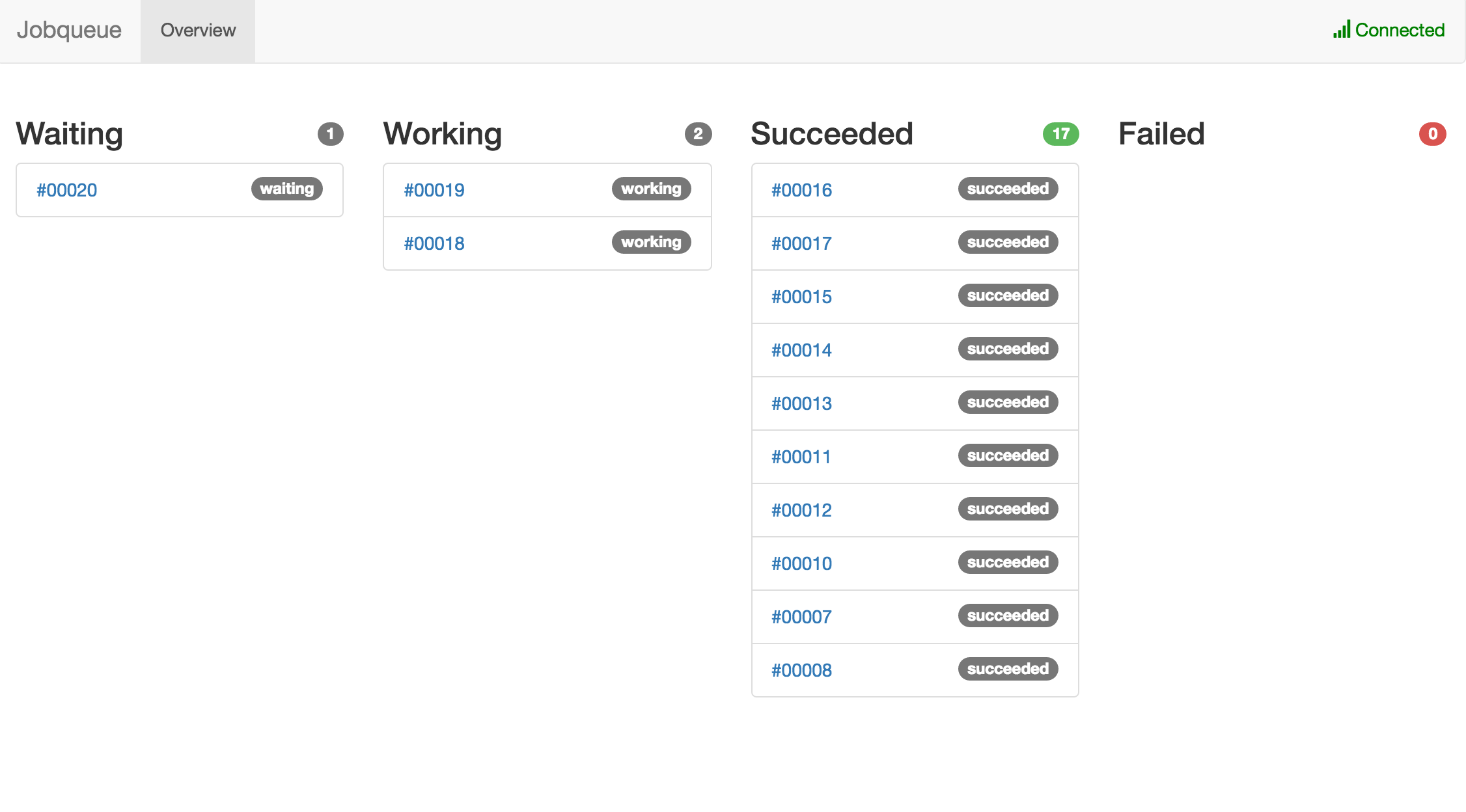Jobqueue manages running and scheduling jobs (think Sidekiq or Resque).
You can choose between MySQL and MongoDB as a backend for persistent storage.
Get the repository with go get github.com/olivere/jobqueue.
Example:
import (
"github.com/olivere/jobqueue"
"github.com/olivere/jobqueue/mysql"
)
// Create a MySQL-based persistent backend.
store, err := mysql.NewStore("root@tcp(127.0.0.1:3306)/jobqueue_e2e?loc=UTC&parseTime=true")
if err != nil {
panic(err)
}
// Create a manager with the MySQL store and 10 concurrent workers.
m := jobqueue.New(
jobqueue.SetStore(store),
jobqueue.SetConcurrency(10),
)
// Register one or more topics and their processor
m.Register("clicks", func(args ...interface{}) error {
// Handle "clicks" topic
})
// Start the manager
err := m.Start()
if err != nil {
panic(err)
}
// Add a job: It'll be added to the store and processed eventually.
err = m.Add(&jobqueue.Add{Topic: "clicks", Args: []interface{}{640, 480}})
if err != nil {
panic(err)
}
...
// Stop the manager, either via Stop/Close (which stops after all workers
// are finished) or CloseWithTimeout (which gracefully waits for a specified
// time span)
err = m.CloseWithTimeout(15 * time.Second) // wait for 15 seconds before forced stop
if err != nil {
panic(err)
}See the tests for more details on using jobqueue.
Ensure the tests succeed with go test. You may have to install dependencies.
You can run a simulation of a real worker like so:
cd e2e
go run main.goPlay with the options: go run e2e/main.go -h.
Then open a second console and watch the worker doing its job:
cd ui
go run main.goThen open your web browser at http://127.0.0.1:12345.
MIT License. See LICENSE file for details.


